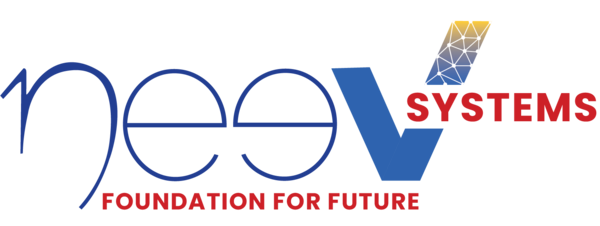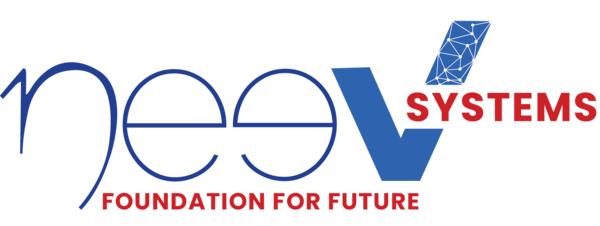Data is a pivotal driver of digital transformation in the modern healthcare ecosystem. Healthcare data is generated from multiple sources, including EHRs, telemedicine, mHealth apps, wearables, and healthcare providers (HCPs) inputs. Since a large chunk of this data is unstructured and complex, many healthcare organizations fail to manage and utilize it optimally. Thus, despite the abundance of healthcare data, organizations often face numerous challenges that impede their progress toward digital maturity.
According to the latest stats, the global patient-centric healthcare app market size is predicted to exceed USD 41.61 billion by the end of 2030, growing at a CAGR of 18.77%.
The multifaceted challenges range from aligning disparate systems and applications to safeguarding large volumes of sensitive patient data while ensuring compliance with industry standards. The situation is further aggravated by the fast-evolving threat landscape of cybersecurity risks and the pressing need to optimize application performance and interoperability across the IT infrastructure.
The absence of smooth integration and interoperability among healthcare systems and applications risks undermining patient care, potentially culminating in medical oversights, treatment delays, and diminished patient satisfaction. Moreover, cybersecurity lapses can trigger substantial financial setbacks, incurring regulatory fines and tarnishing brand reputation.
How can healthcare organizations address these challenges and tap into the rich data pool?
This is precisely the crux of our discourse – the pivotal role of application management services in addressing data challenges and catalyzing the healthcare sector’s digital evolution. With the increasing adoption of new-age digital health solutions, HCPs must prioritize effective application management to ensure seamless integration, data security, and optimal performance of IT systems.
A robust application management strategy can overcome the inherent complexities of healthcare data and enable organizations to keep pace with critical industry demands. In addition to consolidating fragmented data sources, enhancing crisis response capabilities, and advancing diagnostic precision, effective application management can help HCPs deliver superior patient experiences and maintain a strong foothold in the competitive market.
Join us as we delve deeper into the realm of application management, exploring its transformative potential in propelling efficiency and innovation in healthcare.

Overcome Healthcare Data Challenges
The Roadblocks of Healthcare Data Management
Effective data management of data is essential for delivering quality patient care, driving research advancements, and optimizing operational efficiencies. In this section, we’ll explore the critical roadblocks that impede efficient healthcare data management – from data silos to regulatory compliance hurdles – and delve into the key obstacles that healthcare providers must overcome to unlock the transformative power of data-driven insights.
- Data Silos
Data often resides in isolated repositories within healthcare organizations, hindering accessibility and integration. These data silos, arising from duplication and fragmentation across various entities like public health organizations, insurance providers, pharmacies, and patients, impede the holistic utilization of valuable information.
Without cohesive sharing mechanisms, patient data remains trapped within proprietary systems/apps, preventing comprehensive insights and inhibiting advancements in care delivery.
- Regulatory Compliances
The sensitive nature of medical data and personally identifiable information (PII) necessitates stringent adherence to regulatory frameworks like HIPAA, ADA, Stark Law, etc.
The fact that governance rules for PII vary across geographies further complicates compliance matters. The differing nuances of data protection regulations, such as variations in implementation under GDPR, lead to uncertainties, hindering seamless collaboration and market expansion for digital health stakeholders. Also, poor data quality and unorganized silos jeopardize data discovery, audits, and regulatory conformance.
- Integration and Interoperability
Data is enriched through system integration that facilitates seamless flow across systems. Fragmented tech stacks and disparate datasets inhibit the exchange of information essential for comprehensive insights and informed decision-making.
Tech leaders and teams cannot get the complete picture if the critical data components remain scattered throughout disparate systems. Though each dataset might hold a latent value, teams cannot identify or extract the hidden insights without a uniformly synchronized knowledge system. This hinders effective data management and decision-making.
- Security and Privacy
In the face of growing cybersecurity concerns, healthcare organizations struggle to implement the proper security protocols to safeguard sensitive healthcare data and ensure compliance with privacy regulations. Healthcare organizations must –
- Ensure secure access to patient care information from any location, including Electronic Medical Records (EMR)/Electronic Health Records (EHR) and imaging.
- Implement automated mechanisms to shield data from external threats.
- Track and monitor usage by internal users to ensure accountability and mitigate risks.
- Integrate IT security systems to strengthen overall data protection measures.
Data breaches can lead to significant financial losses for organizations and damage their reputation. Most importantly, security breaches compromise patient safety and disrupt patient care, leading to treatment delays and errors in diagnosis or medication.
- Storage and Maintenance
HCPs deal with vast volumes of high-velocity, complex, and variable big data. The exponential growth of healthcare data and the need for fast access to reliable data across systems and devices create data storage, archiving, and backup challenges.
Organizations must choose robust storage solutions capable of accommodating escalating volumes and ensuring accessibility, security, and scalability. They struggle to choose between on-premises storage, moving to the cloud, or using a combination of both.
On-prem storage offers greater control, but it is usually costly to scale and creates data silos. Contrarily, cloud storage promises agility and scale with low initial costs. However, the cloud services provider must be reliable and understand healthcare-specific compliance and security protocols to combat security issues effectively.
- Data accessibility
Balancing data accessibility with stringent security requirements presents a delicate challenge for healthcare organizations. While authorized users require seamless access to pertinent data for informed decision-making, stringent privacy concerns might restrict the scope of the real-world evidence that can be derived from a dataset.
For instance, if the compliance requirements are too difficult to meet, HCPs may not include specific information in a study or refrain from participating in the study to protect patients’ privacy. When data accessibility becomes limited due to such restrictions, an organization cannot deliver accurate insights for the greater good of the public.
Overcoming these challenges demands a strategic and agile application management approach that can streamline data, promote interoperability, and help create a single source of truth that teams across the organization can use.
Transforming Chaos to Clarity: How Application Management Helps Address Data Challenges and Unlock Healthcare Data’s True Potential
Modern healthcare organizations are rapidly embracing next-gen applications and technologies that are more complex than legacy systems. Though these advanced applications and systems promise better care delivery and patient outcomes while being cost-efficient and time-savvy, they must be supported by strategic application management services (AMS).
Partnering with a reliable AMS vendor like Neev Systems can extend numerous benefits to healthcare organizations:
Streamlined Operations
Application management services provide a streamlined approach to handling software applications, including those managing healthcare data.
- Professionals handle end-to-end tasks (installation, configuration, updates, and troubleshooting), ensuring that applications are always up-to-date and running smoothly.
- This frees up valuable time and resources for healthcare organizations to focus on core operations, enhance operational efficiency, and minimize downtime.
Expertise and Support
Access to specialized expertise and round-the-clock support is a key benefit of partnering with an AMS provider.
- Service providers possess in-depth knowledge and experience in managing various complex applications. Their industry expertise ensures optimization for performance, security, and scalability.
- Dedicated support teams address issues promptly to reduce the impact of technical disruptions.
Cost Savings
Leveraging application management services can result in significant cost savings for healthcare organizations.
- Instead of investing in an in-house team, they can tap into the expertise of service providers on a scalable and cost-effective basis.
- It eliminates substantial upfront investments in infrastructure, software licenses, and ongoing maintenance, improving ROI and minimizing revenue loss from downtime.
Enhanced Security and Compliance
Application management services ensure robust security and regulatory compliance for healthcare data.
- Service providers implement stringent security measures, such as regular vulnerability assessments, patch management, and data encryption. They employ standard frameworks and implement systems (such as license management software) that ensure adherence to compliance regulations and prevent accidental violations.
- By providing 360-degree visibility into the organization’s app infrastructure, an AMS vendor can help implement better risk assessment protocols and mitigate data breaches pre-emptively, thereby upholding customer trust.
Scalability and Flexibility
As healthcare organizations evolve, their application needs may change, requiring scalability and flexibility.
- AMS allows organizations to adapt to changing requirements by quickly scaling resources up or down.
- They can assist in integrating new applications or migrating to different platforms seamlessly, empowering healthcare organizations to respond rapidly to market dynamics and capitalize on emerging opportunities.
Integration and Interoperability
As mentioned before, integration and interoperability are crucial aspects of healthcare data management.
- AMS helps integrate disparate systems, allowing for smooth data flow between electronic health records (EHRs), medical devices, and other healthcare applications.
- By ensuring interoperability, these services enable healthcare organizations to aggregate and consolidate data from various sources. For instance, today, many patients use mHealth or telemedicine apps to monitor their vitals, schedule appointments, communicate with doctors remotely, access lab results, and more. By consolidating app data with their medical history, AMS tools provide comprehensive and real-time insights to clinicians, allowing them to customize healthcare and treatment plans for specific medical scenarios.
Data Availability
Data availability refers to the accessibility and reliability of healthcare data when needed for clinical decision-making, research, or operational purposes.
- Application management services ensure data availability by implementing robust backup and disaster recovery solutions, minimizing the risk of data loss or downtime.
- By optimizing data retrieval and access mechanisms, AMS enables healthcare professionals to retrieve critical information promptly and efficiently, thus improving workflow efficiency and patient outcomes.
Storage & Maintenance
HCPs must deal with the increasing storage, complex organization, and upkeep of vast data volumes generated within healthcare systems.
- AMS offers scalable storage solutions tailored to the specific needs of healthcare organizations, whether on-premises or in the cloud.
- Additionally, service providers oversee routine maintenance tasks, such as data deduplication, archiving, and performance optimization, ensuring data integrity, security, and accessibility over time.
Achieving Effective Application Management: Key Steps for Success
Creating an actionable application management strategy demands a proactive approach involving three core steps:
1. Conducting a Gap Analysis
This step is essential to bridge the divide between the current and desired states of the application environment. This structured process delineates the requirements for the application portfolio, pinpointing gaps and opportunities for enhancement. By aligning these insights with organizational goals and resources, healthcare CIOs can strategically prioritize areas for improvement. For instance, if reducing the cost of care delivery is a priority, organizations can direct resources toward optimizing cost-effective application management strategies.
2. Creating an Implementation Roadmap
After identifying the gaps, it’s crucial to create an implementation roadmap that outlines phases that must be addressed over time. Organizations must balance ambitious goals with the judicious utilization of existing resources. Prioritizing opportunities for improvement based on cost-effectiveness ensures optimal resource allocation. For example, applications with high usage and significant licensing costs may warrant immediate attention for replacement or optimization.
3. Embracing the FTR Approach
Central to any application management program is the First Time Right (FTR) approach, which emphasizes accuracy and compliance from the outset. In healthcare, adherence to compliance requirements is non-negotiable. Implementing robust Information Governance practices ensures data is utilized, stored, and shared securely throughout the application lifecycle. A structured governance framework helps align stakeholders, mitigating risks and safeguarding information integrity from development to retirement.
At Neev Systems, our experts deliver custom Application Management Services in collaboration with industry-leading software vendors such as Oracle, SFDC, ServiceNow, Snowflake, and Mulesoft. At the heart of our service delivery is our unique Named Resource Support model, designed to offer flexible and scalable resources at a fixed monthly fee for the agreed-upon duration. This framework enables us to optimize costs while delivering highly skilled resources and technical expertise tailored to your project-specific needs.
Our AMS approach aligns strategically with your IT and business objectives, enabling us to devise customized roadmaps for your applications and infrastructure. By integrating your overarching goals into our processes, we ensure an efficient and effective application management experience.
With Neev Systems, you can expect continuous improvement in your application portfolio without ever having to worry about security and compliance matters

Transform Healthcare Data into Actionable Insights

Sitaram Pothula
With 22+ years of IT experience, Sitaram combines technical expertise with strategic leadership. He has led engineering teams and delivered solutions across BFSI, telecom, and healthcare. Sitaram excels in aligning technology with business goals to drive innovation and efficiency.


